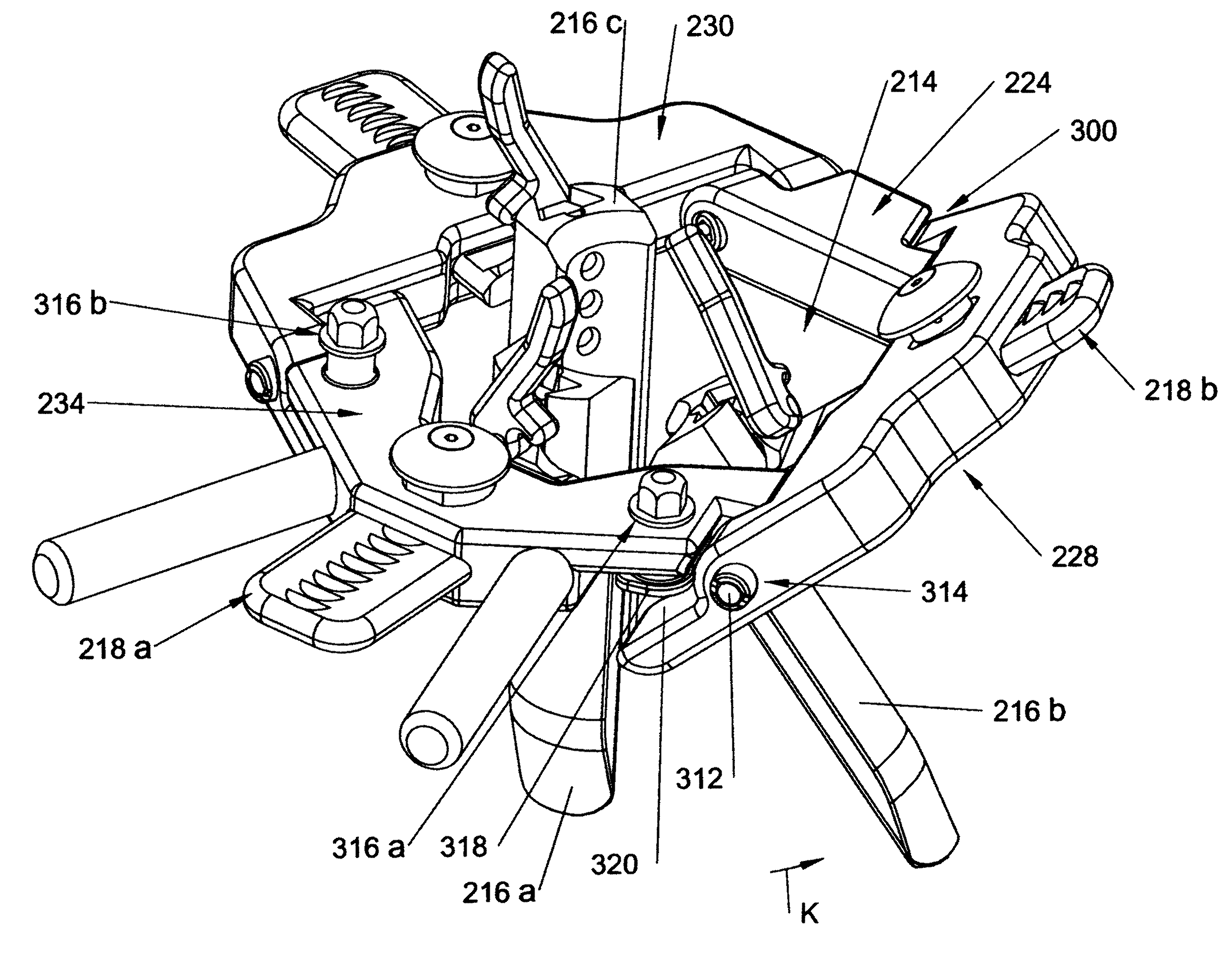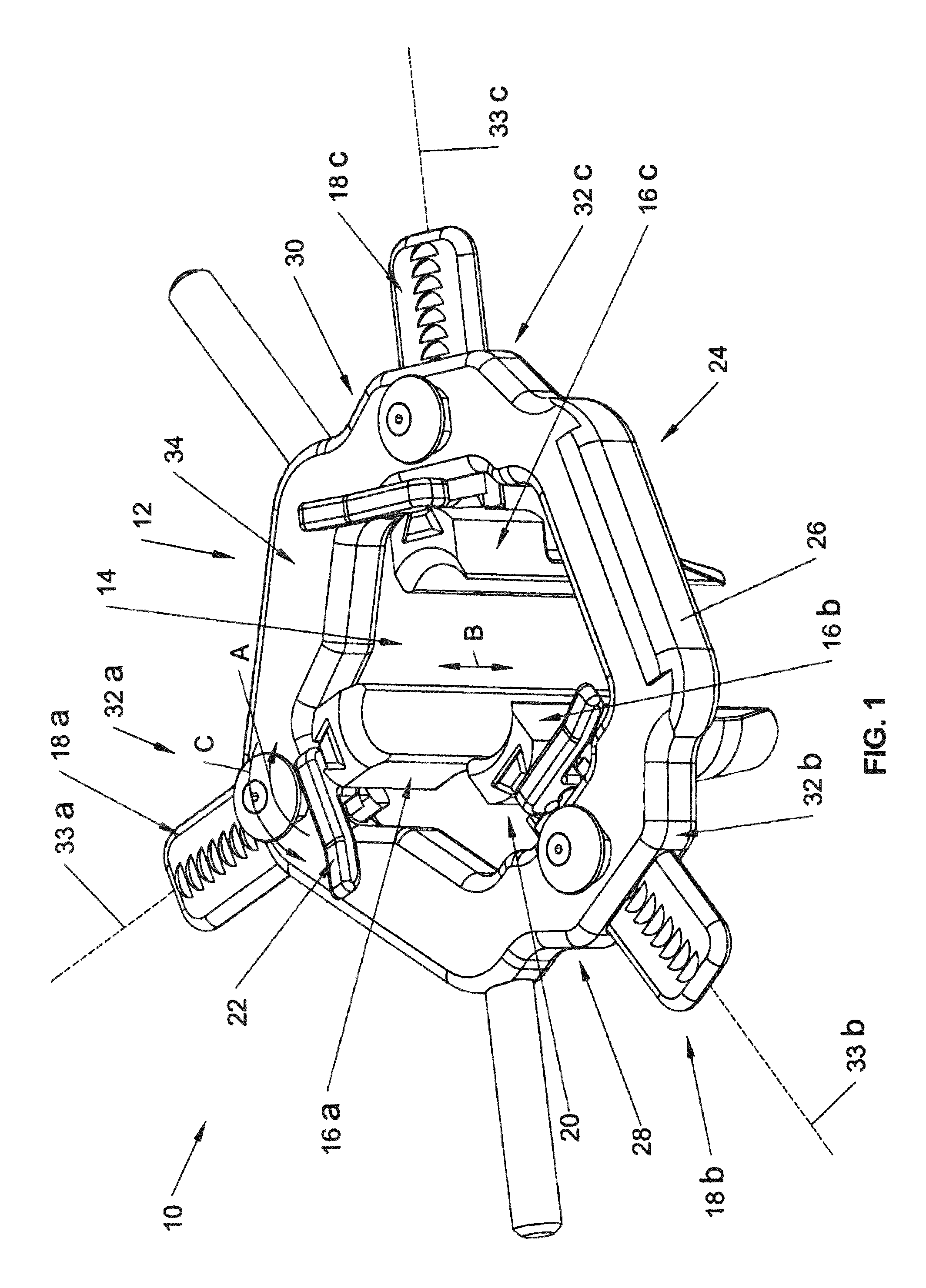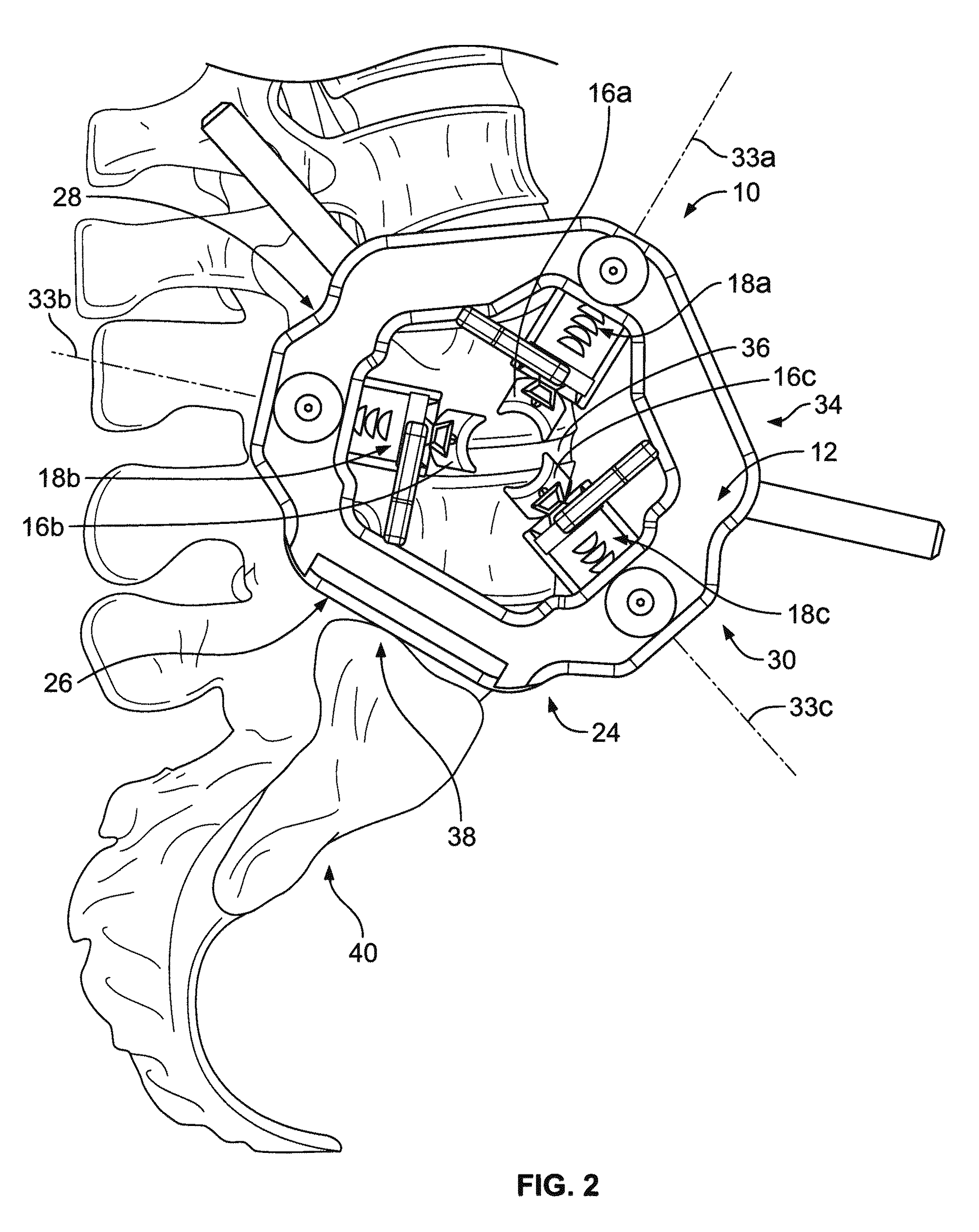Retraction apparatus and method of use
a technology of retracting apparatus and tissue, which is applied in the field of retracting apparatus and method, can solve the problems of difficult use, easy adjustment, and suffering of existing surgical retracting apparatus, and achieve the effects of simple pivoting motion, simple use, and convenient and rapid positioning
- Summary
- Abstract
- Description
- Claims
- Application Information
AI Technical Summary
Benefits of technology
Problems solved by technology
Method used
Image
Examples
Embodiment Construction
[0033]Referring initially to FIG. 1, an access retractor 10 in accordance with the present invention is depicted in a representative embodiment and set up with the apparatus 10 including a frame or body 12 with a large retraction opening 14 centrally located for accessing a surgical site. Inside the opening 14 are located a number of tissue engaging members, such as in the form of retractor blades 16a, 16b, and 16c, which are used to expand an incision and are shown in a fully retracted position. Slider assemblies 18a, 18b, 18c are slidably mounted to the retractor body 12 and connect the blades 16 thereto.
[0034]Preferably, each slider assembly 18 has a locking mechanism 20 for fixing the blade 16 to the slider assembly 18. The locking mechanism 20 includes a pivot or clamping lever, such as a handle 22, which may be pivoted in direction A to an unlocked position that allows the blade 16 to be connected or removed relative to the slider assembly 18. When the handle 22 is in the unlo...
PUM
 Login to View More
Login to View More Abstract
Description
Claims
Application Information
 Login to View More
Login to View More - R&D
- Intellectual Property
- Life Sciences
- Materials
- Tech Scout
- Unparalleled Data Quality
- Higher Quality Content
- 60% Fewer Hallucinations
Browse by: Latest US Patents, China's latest patents, Technical Efficacy Thesaurus, Application Domain, Technology Topic, Popular Technical Reports.
© 2025 PatSnap. All rights reserved.Legal|Privacy policy|Modern Slavery Act Transparency Statement|Sitemap|About US| Contact US: help@patsnap.com



